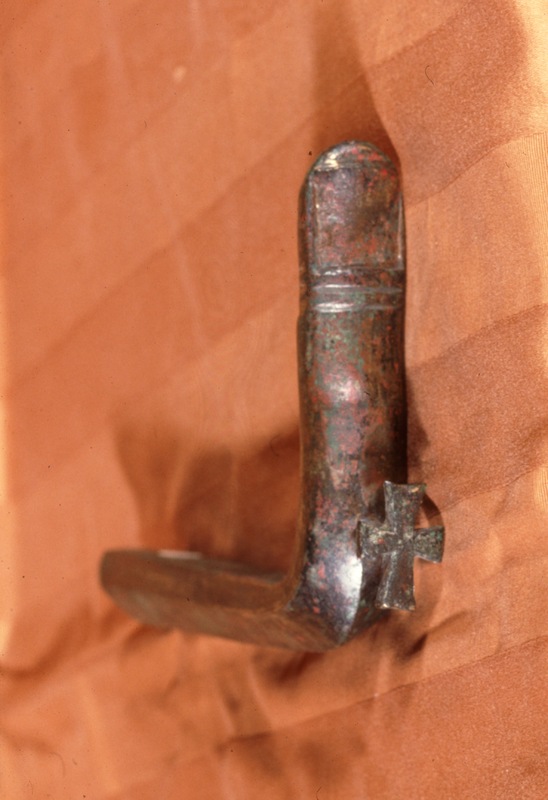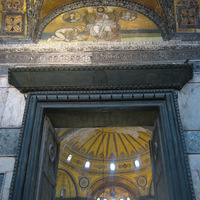Finger-shaped hook
Date:
Sixth century
Medium:
Bronze
Dimensions:
17 × 2.5 × 2.5 cm
Description:
Curtains, and the rings or hooks used to hold them, are depicted in many medieval works, but the material evidence for such hooks is rarer. Hagia Sophia Cathedral in Constantinople (532–37) preserves a row of evenly spaced bronze curtain hooks above the doors of its outer and inner narthexes. These are not only functional but also decorative: they are in the form of human fingers. One such finger hook, from an unknown context, is preserved in the Malcove Collection in Toronto. The cast-bronze knuckle and nail are detailed, and, unlike the Hagia Sophia hooks, a small cross projects from the base. This hook likely helped support a curtain in an early Byzantine church (or possibly an elite Christian household), helping to regulate access, light, and visibility. Alternatively, it may have supported an oil lamp on a chain. These hooks were produced somewhere in the eastern Mediterranean region.
Relevant Textbook Chapter(s):
3
Repository and Online Resources:
• Read about late antique/early Byzantine curtains and hooks here.
• Read more about doors at Hagia Sophia here.
Image Credits:
Art Museum University of Toronto, Wikimedia Commons, Brad Hostetler



